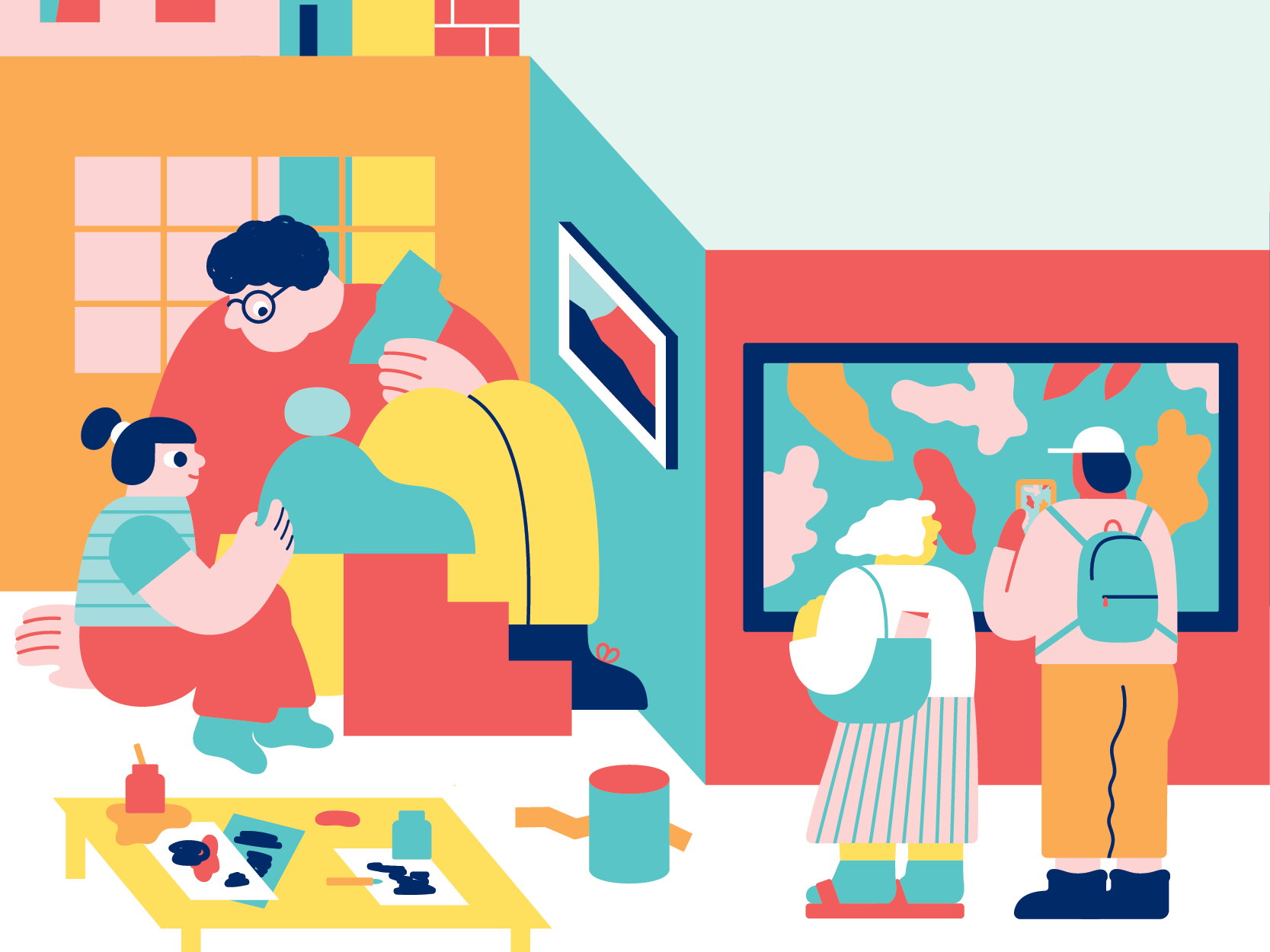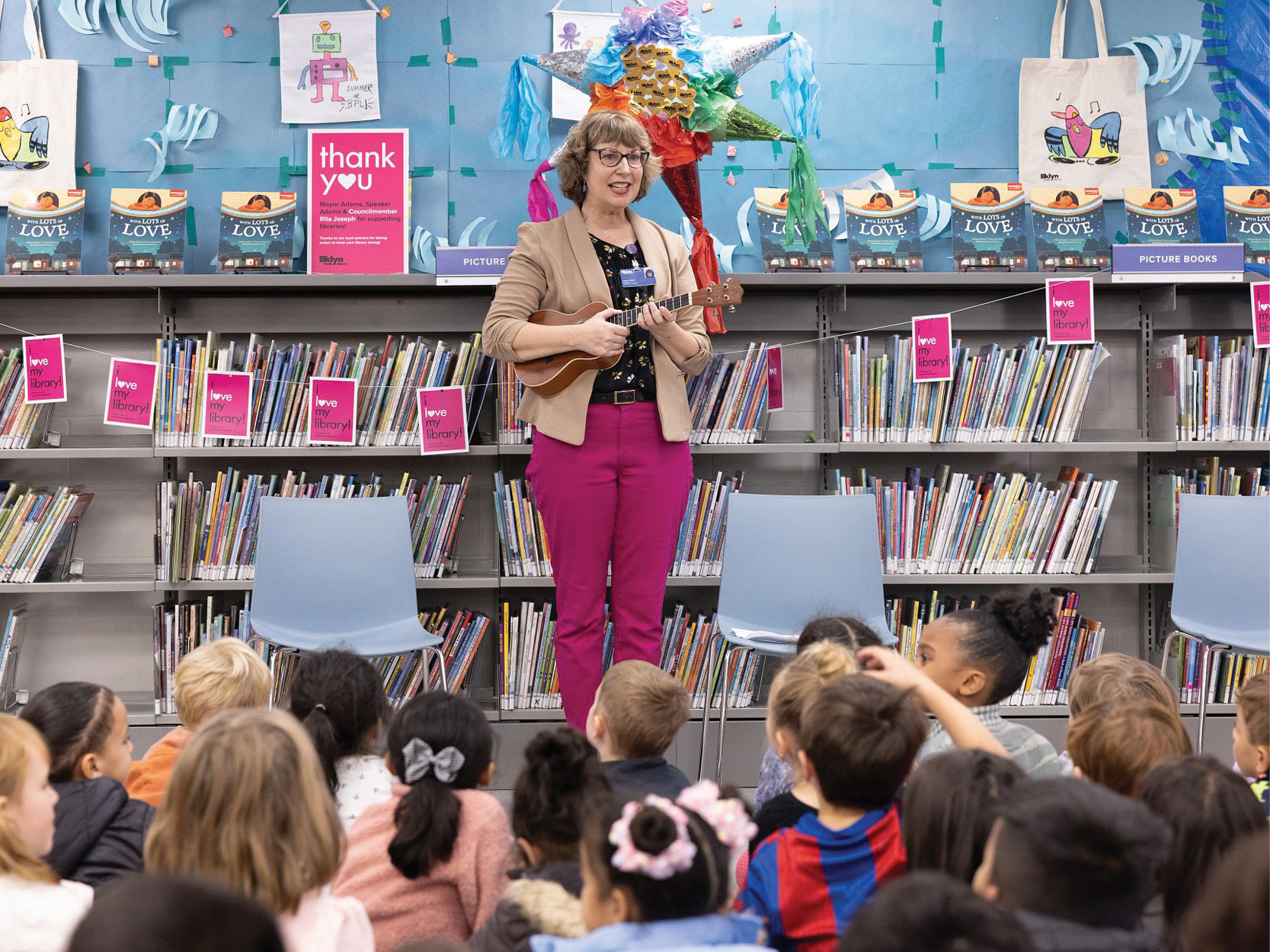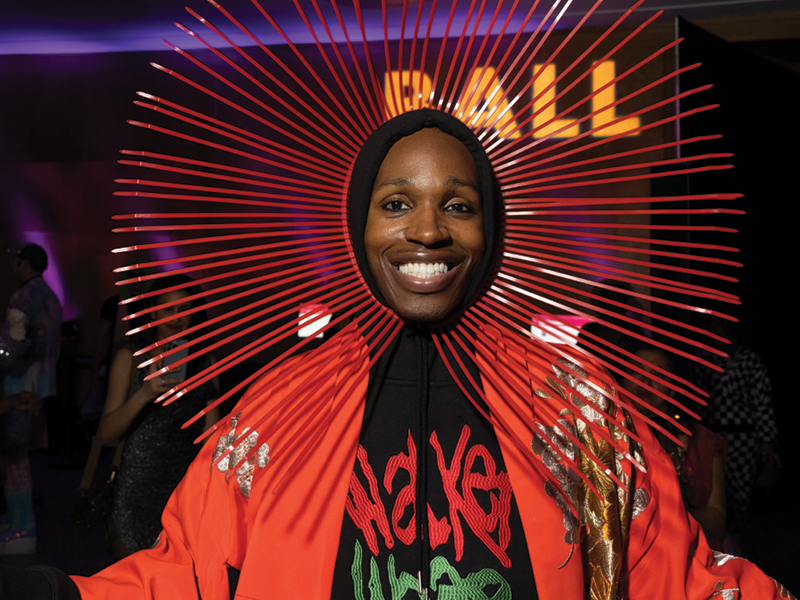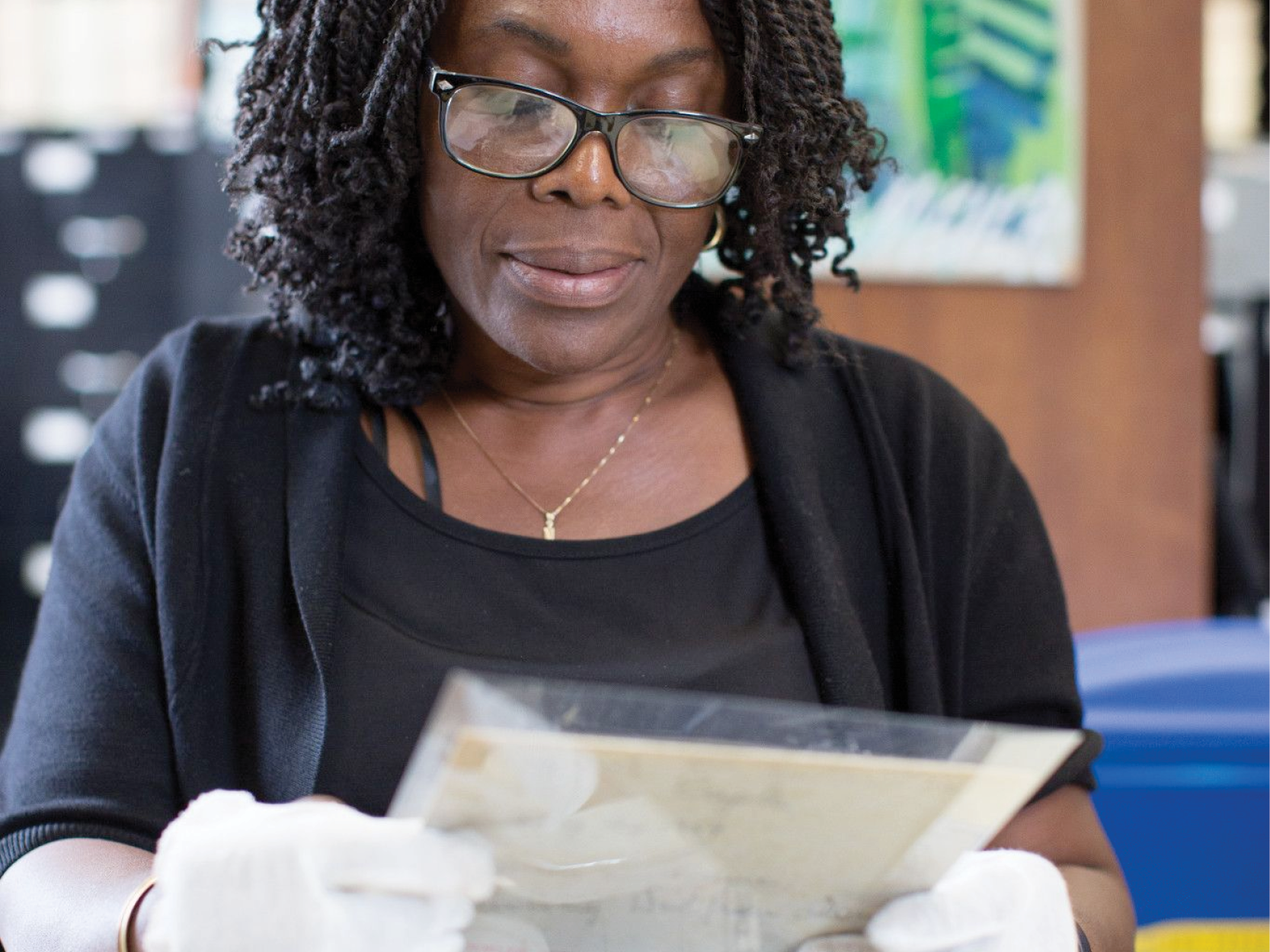
Brooklyn Public Library, Center for Brooklyn History.
The Center for Brooklyn History provides this guide for researchers of Jewish people and communities in Booklyn. The collections include organizational and institutional records, personal recollections and correspondence, family photographs, newspaper clippings, sheet music, and oral histories. The bulk of the material dates from the first half of the 20th century, although some 19th-century material is included. In addition to these materials, researchers are encouraged to browse the collections and research guides for resources that may be relevant to their work. The principal keywords to search ares "Jews" and "Jewish." You can also search for specific subjects and neighborhoods, such as "Hasidism," Brownsville," "Sephardim," "synagogues," as well as Jewish surnames. To create an appointment or ask a question, please contact cbhreference@bklynlibrary.org.
This guide includes a variety of archival and research materials, including: personal, genealogical, and professional documents in both English and Hebrew; club membership registers; wedding invitations; telegrams; sheet music; oral histories; books; and images; For visual material, such as photographs, postcards, and posters, see the Brooklyn Public Library's and the former Brooklyn Historical Society's digital collections.
The Brooklyn Public Library Brooklyn, funded by the David Berg Foundation, hosted the Jewish History Project (2019-2022), a community scanning and oral history repository, to document the history, lives and experiences of Jewish people in Brooklyn. The collection, largely spanning the twentieth century to the 2022, is comprised of digitized oral histories, photographs, personal items and documents donated by Brooklyn residents reflecting their life and Jewish identity, as well as related web content. The collected materials can be accessed via the digital collections portal under the keyword "BJHP."
In addition to these resources, researchers are encourage to explore the Family History and Genealogy research guide, city directories, historical newspapers, and online access to U.S. Census and New York State Census Records ; maps (accessible here and here) and atlases; and almanacs. These resources include references to Jewish individuals, institutions, neighborhoods, businesses, etc. As just one example, the volumes of the Brooklyn Daily Eagle Almanac, which spans the years 1886-1929, list Jewish synagogues, charitable organizations, and educational institutions, with addresses and names of officers and religious leaders. Another useful collection is the Brooklyn and Long Island Scrapbook collection of newspaper clippings, available on microfiche. A card index is available; relevant subject headings include "Jews," "Jewish," and specific items under "Congregation" and "Temple."

Irving I. Herzberg photograph collection, Brooklyn Public Library, Center for Brooklyn History.
Each entry below follows the format:
Collection name, date range of the collection
Call number
Extent in linear feet of collection.
Link to finding aid (more information about the collection).
Brief description of content.
Archival Collections
Brooklyn Federation of Jewish Charities collection, 1910 – 1927
Call number: 1985.097
0.25 linear feet.
Link to finding aid.
The Brooklyn Federation of Jewish Charities collection documents philanthropy and social aid work in Brooklyn’s Jewish community during the early 20th century. It is comprised primarily of copies of the Federation’s annual report spanning the years 1910 to 1920. Also included are a copy of the Federation’s membership roster, dated 1921; a list of subscribers, dated 1926-1927; and several informational pamphlets that highlight the Federation’s work and make appeals for donations.
Daniel J. Kern recollections of Brooklyn, 1908 – 1939
Call number: 1992.024
Extent: 0.1 linear feet.
Link to finding aid.
The writings included in this collection were submitted by Daniel J. Kern to the Center for Brooklyn History (then the Brooklyn Historical Society) over a course of nearly two years. They cover a wide array of topics pertaining to Brooklyn history, including some Jewish history and ethnic relations, as experienced and observed through Kern’s eyes.
Hasidic community of Williamsburg collection, 1987
Call number: 1992.005
Extent: 0.2 linear feet.
Link to finding aid.
This collection consists of children’s books, flyers, pamphlets, and wedding invitations from the Hasidic community of the Williamsburg area of Brooklyn. Most materials are in Hebrew, with several in both English and Hebrew.
Recreation Rooms and Settlement collection, 1905-1991
Call number: ARC.088
Extent: 1.67 linear feet.
Link to finding aid.
The Recreation Rooms and Settlement collection documents the work of the settlement, originally established to provide educational and recreational opportunities for Jewish immigrant women, from its early years on the Lower East Side of Manhattan through its recent activity in the Brooklyn neighborhood of Canarsie. The bulk of the records are from the period 1953 to 1991.
Fred Hoyt family research collection, 1850 – 1974
Call number: ARC.043
Extent: 1.25 linear feet.
Link to finding aid.
This collection contains papers and photographs, circa 1850 to 1974, collected during genealogical research by Fred Hoyt. The collection materials pertaining to the Aschner and Jacobson families of Brooklyn Heights and Montgomery, N.Y. Earlier letters from the Aschner family are written in German, and religious documents are written in Hebrew. The bulk of images in the collection are cabinet cards from the late 19th century.
Alfred and Lucille Kolkin papers, 1942 – 1965
Call number: ARC.048
Extent: 0.42 linear feet.
Link to finding aid.
The Alfred and Lucille Kolkin papers span 1942 to 1965 and contain correspondence between Al and Lucy Kolkin, who grew up in the Brooklyn Jewish community of Bensonhurst and were married in 1943, during Alfred’s Navy training and active service in the Pacific in World War II. The collection also includes materials from Lucy’s employment at the Brooklyn Navy Yard as a ship fitter.
Unity Club records, 1914 – 1966
Call number: ARC.102
Extent: 1.35 linear feet.
Link to finding aid.
This collection consists of a bound volume containing a register of the members of the Unity Club, a Brooklyn Jewish men’s organization founded in 1896 that advocated social, philanthropic, and communal activities, for the period 1914 to 1944. Also included is a program from the Unity Club’s 70th anniversary dinner and a framed painting commemorating the club’s 50th anniversary in 1946, picturing the three clubhouses occupied by the club since its founding.
Brooklyn Bridge teleplay, 1991 – 1991
Call number: 1992.001
Extent: 0.1 linear feet.
Link to finding aid.
A typewritten teleplay, dated 1991, for an episode of the television series Brooklyn Bridge,which aired on the CBS network from 1991 to 1993. The series depicted a Jewish family living in Brooklyn during the mid-1950s. The teleplay is for an episode titled“When Irish Eyes Are Smiling.” Included with the teleplay is a clipping of a 1991 article about the series from the New York Times.
Jacob Brenner papers, 1884 – 1921
Call number: 2006.023
Extent: 2.18 linear feet.
Link to finding aid.
This collection contains documents and news clippings of Jacob A. Brenner (1857-1921), former Brooklyn magistrate and Kings County Commissioner of Jurors and prominent figure in Jewish communal and philanthropic activities. The collection chiefly relates to Brenner’s numerous appointments in the Kings County judicial system and his membership in the Republican Party.
Brooklyn hospitals and health services organizations collection, 1829 – 1998
Call number: ARC.141
Extent: 2.3 linear feet.
Link to finding aid.
The Brooklyn hospitals and health services organizations collection spans the period 1829 to 1998 and contains records of various Brooklyn hospitals and health services organizations, many of which were affiliated with charitable organizations or religious denominations and provided care to Brooklyn’s disadvantaged and underserved citizenry. Jewish institutions represented in the collection are the Jewish Hospital of Brooklyn and Maimonides Hospital of Brooklyn.
Religious organizations of Brooklyn collection, 1828 – 1986
Call number: ARC.242
Extent: 1.3 linear feet.
Link to finding aid.
The religious organizations of Brooklyn collection contains records and publications of several church-affiliated and interdenominational charities, shelters, schools, and missions established in Brooklyn in the 19th and 20th centuries. Materials chiefly consist of annual reports and manuals containing comprehensive information on organizations’ yearly activities and accomplishments. Jewish institutions represented in the collection are Brooklyn Hebrew Orphan Asylum, Daughters of Israel Benefit Society, Hebrew Educational Society of Brooklyn.
Brooklyn sheet music collection, circa 1830-1930
Call number: ARC.226
Extent: 5.25 linear feet.
Link to finding aid.
The Brooklyn sheet music collection contains several pieces of sheet music published in Brooklyn and, to a lesser extent, New York City, by various composers, arrangers, and lyricists during the period circa 1830 to 1930. A wide range of musical forms are represented in the collection, including waltzes, polkas, military marches, parade marches, religious hymns, popular songs, and other forms based upon or inspired by various musical traditions around the world. Though the majority of the song titles and lyrics are in English, some are written in French, German, Hebrew, and Italian.
Photograph and Ephemera Collections
Viscount and Viscountess Halifax photographs of Jewish Hospital of Brooklyn, 1943 – 1943
Call number: V1974.017
Extent: 0.1 linear feet.
Link to finding aid.
The Viscount and Viscountess Halifax photographs of Jewish Hospital of Brooklyn date from 1943 and contain 43 black-and-white publicity-style photographs of Viscount and Viscountess Halifax during two visits to the Jewish Hospital of Brooklyn.
Eugenie Fribourg family photographs and ephemera, 1857 – 2007
Call number: 2011.002
Extent: 1.5 linear feet.
Link to finding aid.
The Eugenie Fribourg family photographs and ephemera collection comprises materials relating to and documenting the family and professional life of physician Eugenie Merzbach Fribourg. The collection provides a rich visual document of Jewish-American family life in the early-20th century.
Rosenfeld and Ginsberg families photographs, circa 1935 to 1945
Call number: V1990.033
Extent: 0.04 linear feet.
Link to finding aid.
The Rosenfeld and Ginsberg families photographs consist of 11 black-and-white photographic prints, dating from circa 1935 to 1945, that primarily depict Helen Ginsberg (nee Helen Rosenfeld), Sam Ginsberg, and other family and friends of Helen and Sam Ginsberg as well as street views of the Brooklyn neighborhoods of Brownsville and Borough Park
Harry Kalmus papers and photographs, 1938 – 1987
Call number: ARC.046
Extent: 4.7 linear feet.
Link to finding aid.
The Harry Kalmus papers and photographs include images Kalmus took during his career as a photographer. In addition to working for advertising agencies and corporate offices in Manhattan, Kalmus photographed events such as weddings and bar mitzvahs in Brooklyn, especially in Crown Heights. This collection includes many photographs of such events as well as a separate series of Kalmus’s papers.
Arthur I. Okanst scrapbooks, 1928-1965
Call number: 2004.023
Extent: 2.5 cubic feet.
Link to finding aid.
Arthur I. Okanst (1886-1965) was a Jewish-American Brooklynite who lived with his wife and daughter in Flatbush and took an active interest in Jewish affairs. His scrapbooks contain clippings and published obituaries; theater and event programs and playbills; souvenirs, menus, leaflets and other printed ephemera; greeting cards, telegrams, and invitations to weddings and bar mitzvahs.
Raanan Geberer photographs of Brooklyn neighborhoods, 1988 – 1990
Call number: V1991.118
Extent: 0.05 linear feet.
Link to finding aid.
The Raanan Geberer photographs of Brooklyn neighborhoods consist of 71 color photographic prints documenting various Brooklyn neighborhoods from 1988 to 1990, including Coney Island, Flatbush, Manhattan Beach, Midwood, Bay Ridge, and Brighton Beach, among others. The photographer places some emphasis on documenting Jewish life in Brooklyn.
Oral History Collections
Congregation Beth Elohim Oral History, 2010
Call number: 2011.004
Extent: 6 digital audio WAV files (7hr, 14min).
Unprocessed.
In 2010, the Brooklyn Historical Society (now the Center for Brooklyn History) partnered with Congregation Beth Elohim, a Reform synagogue founded in Park Slope, Brooklyn, in 1861, to conduct an oral history with longtime member George Harris on the occasion of the synagogue’s upcoming 150th anniversary (2011).
Brooklyn Heights Synagogue Oral History, 2010
Call number: 2011.005
Extent: 8 digital audio WAV files (12 hours).
Link to oral history portal..
In 2010, the Brooklyn Historical Society (now the Center for Brooklyn History) and Brooklyn Heights Synagogue, a Reform congregation, partnered to collect oral history interviews with 10 members of the congregation on the occasion of the synagogue’s 50thanniversary.
Crown Heights Oral History – Bridging Eastern Parkway, 1993-1994
Call number: 1994.006
Extent: 40 cassettes (90 minutes each).
Link oral history portal, link to finding aid.
In 1993-1994, the Center for Brooklyn History (then the Brooklyn Historical Society) collected interviews with 33 residents of the Brooklyn neighborhood of Crown Heights. The subtitle, "Bridging Eastern Parkway," refers to racial tensions expressed during the 1991 Crown Heights riots. Narrators are of African American, Caribbean, Jewish, Polish, and Russian descent and include members of the Lubavitch community. Transcripts of 24 interviews from this collection may be read in the library (pdfs available). Recordings are not currently available to researchers.
Crossing Borders, Bridging Generations, 2011-2014
Call number: 2011.019
Extent: 30 interviews
Link to oral history portal, link to project website, link to finding aid.
Crossing Borders, Bridging Generations was an oral history project and public programming series that examines the history and experiences of mixed-heritage people and families, cultural hybridity, race, ethnicity, and identity in the historically diverse borough of Brooklyn.
Books
The following list highlights some of the Center for Brooklyn History’s books pertaining to Jewish history. Researchers are encourage to browse the catalog for additional titles.
Abelow, Samuel P. History of Brooklyn Jewry (Brooklyn, N.Y.: Scheba Publishing Company; c1937).
Main collection: F129.B7 J5 A32 1937.
Although it is now 75 years since it was published, Abelow’s History of Brooklyn Jewry remains a valuable general survey, particularly for the 19th century, including mention o many early synagogues and, for genealogical researchers, a wealth of names of individual community and business leaders.
Abramovitch, Ilana, and Seán Galvin. Jews of Brooklyn (Hanover, N.H.: University Press of New England; c2002).
Main collection: F129.B7 J49 2002.
A volume of more than 50 brief essays on aspects of Brooklyn Jewish life and history, many illustrated, organized into three themes: Coming to Brooklyn, Living in Brooklyn, and Leaving Brooklyn/Returning to Brooklyn. Essays range from the specific (e.g., The Early Years of the Hebrew Educational Society of Brooklyn; Danny Kaye: Brooklyn Tummler) to the general (Crown Heights in the 1950s; The Brooklyn-American Dream) and from the historical to the anecdotal. A rich source for cultural memory of the Jewish neighborhoods of Brooklyn in the mid-20th century, with useful bibliography of Brooklyn-specific works.
Mayer, Egon. Modern Jewish Orthodoxy in post-modern America : a case study of the Jewish community in Boro Park (PhD diss., Rutgers University; 1975).
Main collection: F128.9.J5 M39 1975p.
A sociological study that includes background on the origin and development of the Orthodox Jewish community of Boro Park.
Poll, Solomon. The Hasidic community of Williamsburg; a study in the sociology of religion (New York: Schocken Books; 1969).
Main collection: BM198 .P6 1969.
A basic introduction to the origins of Hasidism in Europe and the establishment of the Hasidic communities of Brooklyn, with emphasis on social and family structure and religious hierarchy. Interested readers may wish to supplement this work with more recent information available online.
Rosenbloom, Joseph R. A biographical dictionary of early American Jews: Colonial times through 1800 (Lexington, KY: University of Kentucky Press; 1960).
Main collection: E184.J5 R63 1960.
Brief identifications of Jews known from available published literature and manuscript materials, with reference to those primary sources. Aimed primarily at historians and advanced genealogical researchers.
Rubin, Israel. Satmar; an island in the city (Chicago: Quadrangle Books; 1972).
Main collection: BM198 .R8 1972.
A study of one specific Brooklyn Hasidic community, the Satmar, that provides a description of Satmar life and discusses the internal structure of the community. Though academic in nature, it is accessible in tone.
Sutton, Joseph A. D. Magic carpet : Aleppo-in-Flatbush : the story of a unique ethnic Jewish community (New York: Thayer-Jacoby; c1979).
Main collection: F129.B7 S93 1986.
A portrait of the Syrian Jewish community of Flatbush, with treatment of its history and customs; part II focuses on the history of this community when it still existed in Aleppo and Damascus.
Additional Resources and Organizations
American Jewish Historical Society (AJHS)
http://www.ajhs.org/
Founded in 1892, AJHS is the oldest national ethnic historical organization in the nation. Its collections, which include records of the nation’s leading Jewish communal organizations and important holdings in the fields of education, philanthropy, science, sports, business, and the arts, reflect the history of the Jewish presence in the United States from 1654 to the present. A particularly relevant collection in the AJHS archives is the Records of Brooklyn Hebrew Orphan Asylum, 1878-1972.
American Jewish Joint Distribution Committee (JDC) Archives
https://archives.jdc.org/
Providing rescue, relief, and rehabilitation to Jews outside the United States from the early 20th century, the JDC was particularly active in its support of Soviet Jewry and the emigration movement, which has relevance for the history of Brooklyn’s modern Russian Jewish communities in Brighton Beach, Coney Island, and elsewhere.
American Sephardi Federation
http://americansephardi.org/
The ASF represents the heritage of Sephardim—Jews tracing their origins to the Iberian Peninsula as well as the Balkans, North Africa, and other Muslim lands including Iraq, Iran, Syria, Turkey, Yemen, Ethiopia, and Bukhara. Brooklyn is home to a large community of Syrian Jews based particularly in Gravesend.
Brooklyn Jewish Center – Digital Archives
http://www.brooklynjewishcenter.org/DigitalArchive.php
A digital archive of selected papers from the Brooklyn Jewish Center, the first all-encompassing Jewish “Community Center”, established in 1920.
Center for Jewish History (CJH)
https://www.cjh.org/
The CJH represents a partnership of five resident organizations—American Jewish Historical Society, American Sephardi Federation, Leo Baeck Institute, Yeshiva University Museum, and YIVO Institute for Jewish Research. Its library services includes the Ackman & Ziff Family Genealogy Institute. See also Items Tagged “Brooklyn” in its digital collections catalog.
JewishGen
https://www.jewishgen.org/
Free website devoted to Jewish genealogy; allows searching by surname and town.
YIVO Institute for Jewish Research
https://yivo.org/
An archive and library devoted to East European Jewish history and culture, YIVO is home to the archival records of the Hebrew Immigrant Aid Society (HIAS) and other immigrant support groups, such as the American Jewish Congress, as well as numerous landsmanshaftn (mutual aid societies); see also its Milstein Family Jewish Communal Archive Online, which focuses on Jewish life in 20th-century New York.
This research guide was compiled and written by Jeff Edelstein. Updated April 2023.







